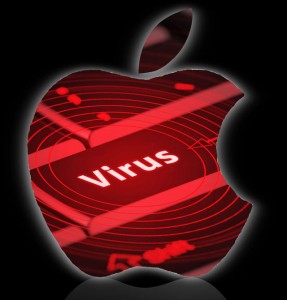 When it comes to Mac repair Los Angeles computer users usually are thinking only about hardware damage or failure. However, in recent years, there has been an increase in malware that targets Apple devices. Mac users need to start being aware of the dangers lurking in cyberspace that can affect their machines.
When it comes to Mac repair Los Angeles computer users usually are thinking only about hardware damage or failure. However, in recent years, there has been an increase in malware that targets Apple devices. Mac users need to start being aware of the dangers lurking in cyberspace that can affect their machines.
Malware on the Loose
Mac users tend to be a little less informed about malware incursions simply because they are not used to thinking about the possibilities. Although the Apple systems tend to be built to be less susceptible to computer viruses, technicians who specialize in office virus removal know that the computer virus is not the only way malware can infect a computer.
One of the most likely ways for a Mac computer to be attacked by malware is through a third-party browser and various browser plugins like Java, Adobe Reader, and Flash. Since these plugins are very common and much used, many Mac users have them installed and enabled. The plugins can start functioning like doggy-doors for malware access to your computer if you are not careful. Other ways that malware can make its way onto an Apple machine are phishing scams, Trojan horses, and various other fraudulent activity online.
A Trojan horse might be a seemingly innocuous website that surreptitiously downloads malware to your computer when you visit it online. The coding on the site doesn’t care what your operating system is, it simply responds to the visiting computer and takes advantage of the access. Other forms of Trojan horses might come your way via an email attachment, which begins downloading the malware when you click the attachment to see its contents.
Phishing scams will often come through email, with messages that seem to mimic official communications from well-established businesses or government offices, requiring you to fill out a form of crucial information, in order for the sender to correct a serious problem that has developed. If you receive an email unexpectedly from such senders, always visit the official site (do NOT use any URL given in the email), and check for their contact policies. Most of them will state that they will never ask you to fill out a form via email, especially not asking you to provide secure information. If you verify that the email you have received is a phishing attempt, also check whether the company or government office has a fraud division: they may ask that you forward the phishing attempt to them. They do try to track down these fraudsters.
Going for the Apple Core
Although most PC users tend to be more aware of these issues regarding internet security and safe computing, Mac users should become practiced in spotting the potential problems. Hackers look for ripe fields to exploit, and just because they have by-passed the Mac market up to now that does not mean that they will continue to do so. With IT consulting Los Angeles Apple users can learn about what to look for when it comes to malware on their Mac.
With the increase in mobile Apple devices which readily connect to your computer to transfer data easily, the opportunities for inadvertent transfer of malware has increased greatly. Coding that may do nothing on your iPhone could possibly become a serious problem the next time you sync your iPhone to your Mac. Business computer services that use Apple devices should check with IT experts to make sure their computer security is properly maintained.
Taking Precautions
If you do not want to be dealing with MacBook repair due to malware infestations, check with an Apple Certified expert promptly. Then learn about the various ways your computer devices can become susceptible to “Mac attacks.” Smart IT experts plan ahead for possibilities, so even if you as a user don’t have any idea what to do in case of malware on your Mac, the specialists are prepared to give you the best assistance in dealing with the problem. Don’t panic, but learn to be a bit suspicious about emails with links or odd attachments, especially when sent from unusual sources. The infestation can be dealt with, should the unfortunate event of malware intrusion happen.
 Over 50,000 customers served!
Over 50,000 customers served!




